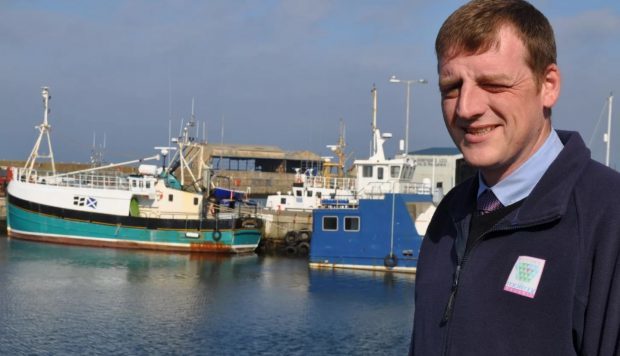Moray’s biggest harbour has a new face at the helm as it prepares to branch out even further into new industries.
Darren Bremner is believed to be one of the youngest harbourmasters in Scotland – after taking the job at Buckie at the age of 35.
The Findochty native joined the team at the port a year ago as an assistant, but was almost immediately thrown in at the deep end when the previous harbourmaster resigned nine days later.
Yesterday, Mr Bremner was appointed permanently to the top post at Moray’s busiest port.
He said: “I am delighted to get the job, particularly at a time when the harbour area has so much going for it in terms of future development.
“I’ve got to know many of the harbour users in my year here and I am really looking forward to working with them to realise the harbour’s full potential.”
Buckie’s historic fishing trade may have declined with the port handling mainly commercial freight these days – but about 100,000 tonnes of cargo pass through the entrance to the harbour from the Moray Firth.
However, the port is being developed as a base for the servicing and maintenance of vessels which are involved in the offshore renewable energy industry.
The town is in contention to be named as a key harbour by Morl (Moray Offshore Renewables Ltd), who want to build up to 90 turbines about 25 miles off Buckie’s coast.
The nearby former shipyard remains under offer after being marketed by the council as a potential home for firms in the energy, manufacturing, shipbuilding or cargo industries.
Mr Bremner has plied his trade on semi-submersible rigs and large supply vessels as well as smaller barges. He has previously worked at shipyards in Gran Canaria, Invergordon and Hartlepool.
Moray Council’s harbour operations manager, Duncan Brown, believes that amount of training experience will make him an “invaluable asset” in .
He added: “Darren is a crucial member of the council’s new harbours team which is focused on the development of all of Moray Council’s harbours in order to increase activity levels and attract economic investment.”
